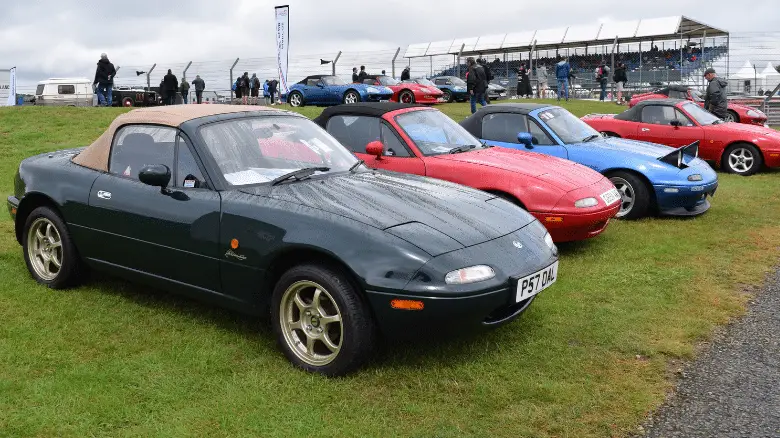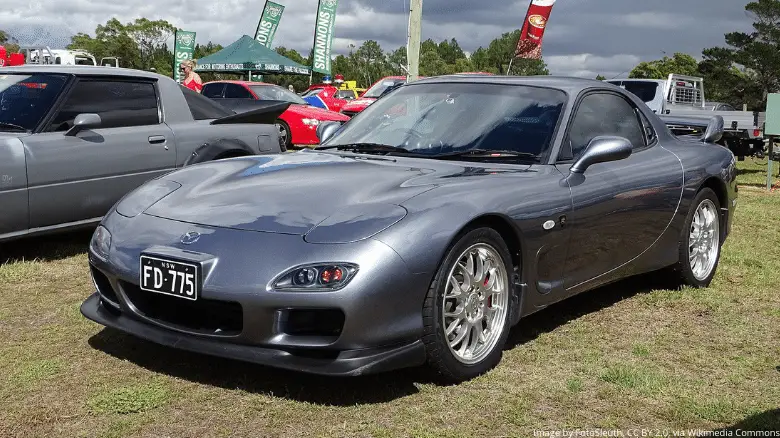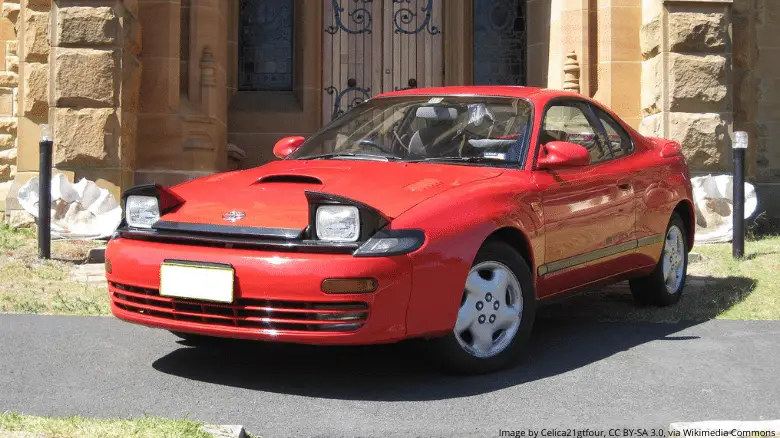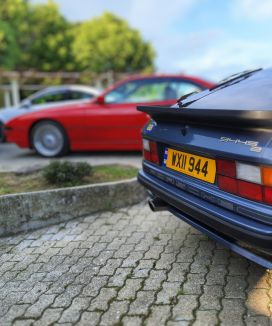What Does JDM Mean? (The Interesting Truth)
Table of Contents
Table of Contents
Do you know what JDM stands for? If not, don’t worry – you’re not alone! JDM is a term that is often used in the automotive world, but its meaning can be a bit confusing to those who are not familiar with it.
In this blog post, we will discuss the definition of JDM and some of the most popular cars that fall under this category.
So, what does JDM mean?
A JDM car is a Japanese Domestic Market vehicle. The term “JDM” refers to the fact that these cars are designed and built for the Japanese market, as opposed to vehicles that are exported for sale in other countries around the world.
There is often confusion about which cars actually count as JDM vehicles, so in this article we’ll clarify the differences, and explain how you can identify one.
What is a JDM car and where does the term come from?
Many people consider any Japanese car to be a JDM vehicle, but this is simply not true.
To be classed as a JDM car, it has to have been sold in Japan originally. If it’s a Japanese car that was sold in the USA, or any other market around the world, it is not a JDM car.
JDM cars are known for their quality, performance, and style, and they have become some of the most sought-after cars in the world. Many JDM car owners modify their cars to make them even more unique, and the community of JDM car enthusiasts is highly active and passionate about their cars.
The term has come to be associated with a particular style of car, and many people use it to refer to cars that are modified or built for racing.
While this is often the case, it actually applies to all vehicles that are built specifically for the Japanese market.
How do you spot a JDM car?
JDM cars are becoming increasingly popular, but they can be tricky to spot. There are a few key features that set JDM cars apart from other vehicles on the road.
One of the most obvious signs of a JDM car is which side the steering wheel is on. In Japan, vehicles are driven on the left side of the road, so all JDM cars have their steering wheels on the right side.
This method makes JDM cars easy to spot if you’re in a country that drives on the right, such as the US, but is a little harder if you’re in a country that also drives on the left, such as the UK.
If you’re in the US and your Japanese car has its steering wheel on the left, then it’s likely to be a US Domestic Market (USDM) vehicle.
Another way to spot a JDM car is by checking the Vehicle Identification Number (VIN) under the hood. All USDM vehicles are required by law to have a 17 digit VIN, but cars manufactured for the Japanese market don’t follow the same rule.
Instead, they tend to display a chassis number, vehicle ID number, or frame number to identify the car. So if the number you’re looking at doesn’t conform to the 17 digit VIN, then it’s likely to be a foreign-market vehicle.

Other ways to spot a JDM car include learning the subtle differences in the headlights, trim, and even the badge, as Japanese market cars often differ slightly from domestic market vehicles, although this is model-specific.
And finally, Japanese licence plates are a different shape to many others around the world, so the licence plate holder on a JDM car is often a dead giveaway!
Although this method doesn’t work in the US, as Japanese licence plates are a similar size and shape as US ones.
What makes JDM cars so special?
There’s something about JDM cars that sets them apart from the rest. They have a style and personality all their own, and they always seem to turn heads when cruising down the street.
JDM cars are also known for their performance, and many of them are built with high-powered engines that can really pack a punch. But what really makes JDM cars so special is their attitude.
These cars exude confidence and excitement, and they always seem to be up for a good time. Whether it’s cruising down the highway or tearing up the track, JDM cars are always ready to show off their stuff.
Japanese cars also have a reputation for being reliable, efficient, and well-built, but there’s something about JDM cars that makes them particularly covetable.
For enthusiasts, it’s often the promise of performance and style that sets JDM cars apart, but for others its their exclusivity. Many of the most popular JDM cars, such as the Nissan Silvia S15 and Mitsubishi Lancer Evo VI, were never officially exported to the US market. As a result, they remain somewhat elusive, which only adds to their allure.
For others, it’s the history and culture surrounding JDM cars that makes them special.

In Japan, car culture is deeply intertwined with the country’s history and identity. For instance, the rise of drifting in the 1990s was closely linked to the manga series ‘Initial D’ which helped to popularize the sport, and we know much the Japanese love their manga!
Similarly, the Fast and Furious franchise has played a big role in making JDM cars more accessible to a global audience.
Why are JDM cars becoming more and more popular in North America?
Japanese domestic market (JDM) cars are becoming increasingly popular in North America for a number of reasons. First and foremost, some JDM cars offer excellent value for money.
They are typically well-built and reliable, and they often come packed with features that tend to be expensive on their North American counterparts.
Additionally, many consider JDM to have a more unique and stylish design than their domestic-market counterparts. This is especially appealing to car enthusiasts who appreciate the understated beauty of Japanese automotive design.

Finally, JDM cars often have better performance than their North American counterparts thanks to lighter weight and the ease at which they can be modified.
This blend of quality, customization, and style has made JDM cars immensely popular in North America.
What are some of the most popular JDM cars?
Among JDM (Japanese Domestic Market) fans, there are a few cars that stand out as the most popular.
One of these is the Nissan Skyline, which was first produced in 1957 and has since undergone several generations of changes. The Skyline is especially popular among collectors and enthusiasts, due to its racing heritage and sleek design.
Another popular JDM car is the Toyota Supra, which was first introduced in 1978 and quickly gained a following thanks to its impressive performance and stylish good looks.
The Supra has also been featured in several video games and movies, increasing its popularity even further.
Other popular JDM cars include:
- Mazda RX-7
- Mitsubishi Lancer Evolution
- Nissan Silvia
- Toyota AE86
- Honda Civic Type R
- Subaru Impreza WRX STi
These cars are all known for their speed, power, and handling, and they have a loyal following among car enthusiasts.
JDM cars are often modded and customized, and many people consider them to be works of art. When it comes to JDM cars, there is a great deal of variety, and there is something to suit every taste.
These iconic sports cars are highly sought after by collectors and drivers alike, and their prices continue to rise as their rarity increases. While it may be difficult to get your hands on one of these elusive machines, there’s no denying that they are some of the most popular JDM cars on the market.
In today’s market these cars are rapidly increasing in value as collectors and enthusiasts snap them up, but there are still plenty of affordable JDM cars out there if you’re looking to buy on a budget.
Whether you are looking for a fast and furious ride or a sleek and stylish machine, there is sure to be a JDM car that is perfect for you.
How can you get your hands on a JDM car?
For Japanese car enthusiasts, JDM cars are the Holy Grail. These highly coveted vehicles are were only available in Japan, making them difficult (and expensive) to import. However, there are a few ways to get your hands on a JDM car.
One option is to buy from a Japanese specialist dealer or importer. These companies specialize in importing cars from Japan, and they often have a wide selection of JDM models to choose from.
Another option is to buy from a private seller. These sellers are often individuals who have imported a car from Japan themselves and are now looking to sell it.

Finally, you can try contacting Japanese used car dealerships, salvage yards or auto auctions directly to see if you’re able to import a JDM car yourself.
But be careful if you choose this route. Not only is it expensive, but it can also be complicated and time-consuming.
You will need to learn the laws around importing vehicles in your country, and if you’re in the USA, the major hurdle is the ’25 year rule’ that makes it illegal to import any JDM car that’s under 25 years of age.
It’s important to do your research. You’ll need to know what kind of JDM car you’re looking for, as well as what kind of price range you’re comfortable with.
Final thoughts
JDM stands for ‘Japanese Domestic Market’, and refers to cars which were originally sold in Japan, rather than exported to a foreign market.
These cars are some of the most popular and sought-after vehicles on the market. They are known for their style, performance, and customization potential, making them a favorite among car enthusiasts.
If you’re looking to get your hands on one of these elusive machines, be prepared to do your research and be patient. With a little luck, you may just be able to find the perfect JDM car for you.
ABOUT THE AUTHOR
Adam Chinn writes about the intersecting worlds of classic cars, driving pleasure, and smart investment strategies. Starting his journey at 26, he’s proven that one doesn’t need to be wealthy to begin investing in classic cars.
Adam’s insights have been recognized on platforms such as MoneyInc, Swagger Magazine, and Top Speed.



